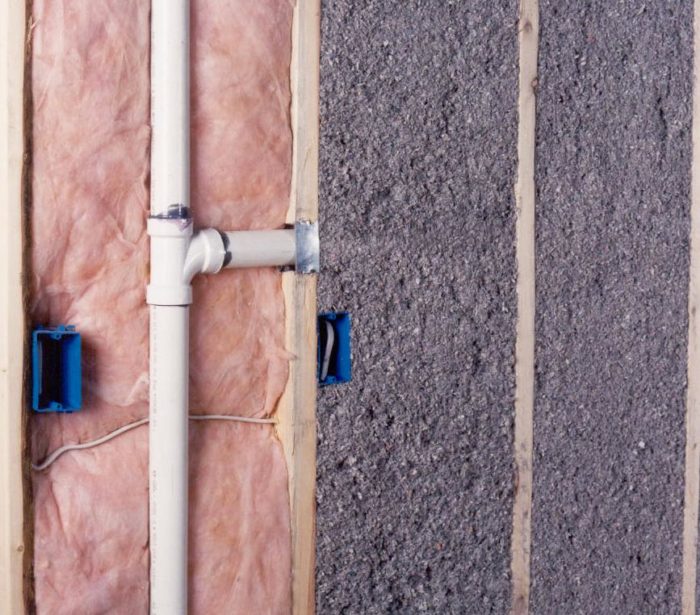
Image Credit: Appelgate Insulation
I was about to launch into an article on insulating empty wall cavities in an older house when I realized that the topic is best broken down into two sections: a survey of the products you can use to insulate your wall cavities, and a discussion of installation techniques and methods. I’m just glad I realized that in the first paragraph as opposed to the fifth page. So this article will focus on insulation materials.
Important Note: In this article, I am only talking about insulating existing wall cavities in an older house. This article is not about wall insulation in new construction. I would’ve had to take a “No Country for Old Men”-style air gun to the head to tackle that large a topic in one post.
Also, we’re only talking about closed wall cavities. We’ll deal with roof trusses and gut rehab jobs another time.
Five options
Short of gutting the wall cavities, which would allow full access (and all possible options), there are five insulation options: loose cellulose, dense-packed cellulose, loose blown-in fiberglass, dense-packed fiberglass, and injection foam. As with any project, each approach has its strengths and weaknesses; your choice will depend on your specific project details and your skill levels.
Loose-fill cellulose
Loose-fill cellulose is that stuff everyone is familiar with as insulation settled into the bottom of the wall cavity. Maybe it was blown into the wall cavities 20 or 30 years ago by some enterprising owner and now it does a passable job at insulating (the old “better than nothing”).
Check out this article for information on cellulose. When I describe it as “loose-fill,” I mean that it was blown in under low pressure, so that it has not achieved the uniform 3.5 lbs/cubic foot density required for dense-packed cellulose. Loose-fill cellulose is most commonly installed by DIY homeowners who’ve rented a blower machine from the local Big Box store.
The insulation is blown into the empty wall cavity (we’re assuming an uninsulated wall here). You would drill a hole in the top and bottom of each wall cavity, filling it as best you can without seeing inside. (I’ll go into a bit more on the logistic challenges in the next article. Loose-fill cellulose, dense-packed fiberglass, and loose-fill fiberglass are all similar in installation.)
The best selling point of loose-fill cellulose (and fiberglass) is that almost anyone can do it after the intense (nearly 30-minute) training regimen that the Big Box stores provide. Fill the wall cavity as best you can, not worrying if the insulation is filling in voids or dense or even enough. Don’t worry… you can’t see in the wall cavity and your Big Box insulation rental is nowhere near powerful enough to dense pack the insulation anyway.
The real benefit of loose-fill is that it’s an inexpensive DIY approach. The R-value and air leakage reduction potential won’t be up to snuff because the cellulose density will be spotty and uneven. It’s simply the least expensive way to put some R’s in that wall without tearing out the interior walls.
Lastly, you wouldn’t want to install loose-fill cellulose (or dense-packed cellulose or dense-packed fiberglass) in a brick or concrete-faced wall unless absolutely certain about there being a vapor barrier or capillary break between them. Brick and concrete are moisture-permeable, and placing insulation like cellulose (remember, it’s shredded paper) next to it can be a huge problem.
Dense-packed cellulose
Dense-packed cellulose is just like loose-fill cellulose except for how we install it. Rather than trudging to the store, loading up the insulation and towing the insulation blower, suiting up in a Tyvek body suit and HEPA mask, and then swearing when you drill through a electrical wire, you instead get out your cell phone and dial it. (When it comes to dealing with the contractor price, it may help to imagine that the insulation work is free but the phone call was $6,000.)
Dense-packed cellulose is cellulose blown into a wall cavity until it reaches 3.5 lbs. per cubic foot — a.k.a. “dense.” This approach has some great advantages and one hurdle: it should only be done by experienced contractors.
The insulation machines for dense-packed cellulose make the Big Box rental look positively Yugo-esque. If a homeowner is lent a commercial insulation blower by a contractor buddy, it’s very easy for him to blow out drywall and plaster walls by overfilling the wall cavity. (Sure, professionals still might do this, too — but they’d be obligated to fix it.)
When installed against porous and potentially wet surfaces like brick, dense-packed cellulose has the same moisture concerns as loose cellulose. The R-value is comparable, while the reduction of air flow is vastly superior (since the dense-packed cellulose retards air flow through the wall cavity). While dense-packed cellulose doesn’t meet the technical requirements of an air barrier, it greatly tightens the building envelope compared to loose-fill cellulose or fiberglass.
Loose-fill fiberglass
Loose-fill fiberglass has become quite popular for DIY insulation projects, as the Big Box stores (rhymes with “Dome Hepot”) are more likely to stock it than cellulose. The installation process remains the same, and if homeowners fill a stud wall cavity, they’ll achieve similar R-value, uneven insulation density, and lack of air leak controls across the building enclosure.
Loose fiberglass can be blown in quite tightly, and when blown to a high density (at least 2 lbs. per cubic foot), will result in a reduction of air leakage through the wall (like dense-packed cellulose).
Like other fibrous insulation materials, loose fiberglass, when installed against porous brick or concrete, can be problematic. That leads us to:
Dense-packed fiberglass
Dense-packed fiberglass is gets a bit tricky. Standard loose-fill fiberglass is lighter and less dense than cellulose, which is why even when packed tightly it is less able to retard air flow. However, there are fiberglass products engineered for dense-pack applications. These are able to closely mimic the characteristics and benefits of cellulose.
The challenge is that fiberglass designed for dense packing has a lighter fiber and doesn’t settle as readily in loose attic applications. So you need two different products for the different jobs where a single cellulose product can be used for both.
Injection foam
Sometimes called tripolymer foam, injection foam is — wait for it — injected into the wall cavity, where it expands around wires and outlets. When installed correctly, injected foam provides a relatively high R-value per inch. It can be safely installed with brick and stucco facings, and it reduces air leakage. (When installed correctly …)
The challenge, as with any insulation application, is correct installation. During Efficiency Maine’s rebate program in 2010 and 2011, I tested out about 15 houses where the homeowners opted for injection foam. The results were wildly varied, from near perfectly uniform insulation to one case where the shrinkage was so severe that a different contractor fixed the issue by pumping in nearly 100 bags of cellulose. It’s safe to say this is a still-maturing technology, and that one should work with contractors experienced with injection foam application.
A couple of notes on applications with brick, brick facings and stucco: First, we’re talking about insulating the framing walls, not the drainage plane. We don’t want to prevent the exterior from draining and drying.
Second, check out this article by Martin Holladay detailing all the many, many challenges with adding insulation to brick buildings.
There are many different material approaches to insulating wall cavities. Choose one which matches your budget, conditions, and skill level.
Erik North, the owner of Free Energy Maine, is an energy auditor and home performance specialist in Westbrook, Maine. He is also the author of the Energy Auditing Blog.
Weekly Newsletter
Get building science and energy efficiency advice, plus special offers, in your inbox.





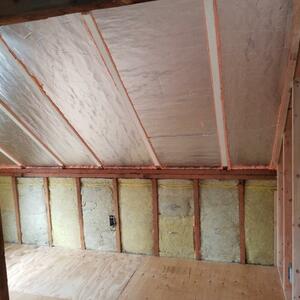
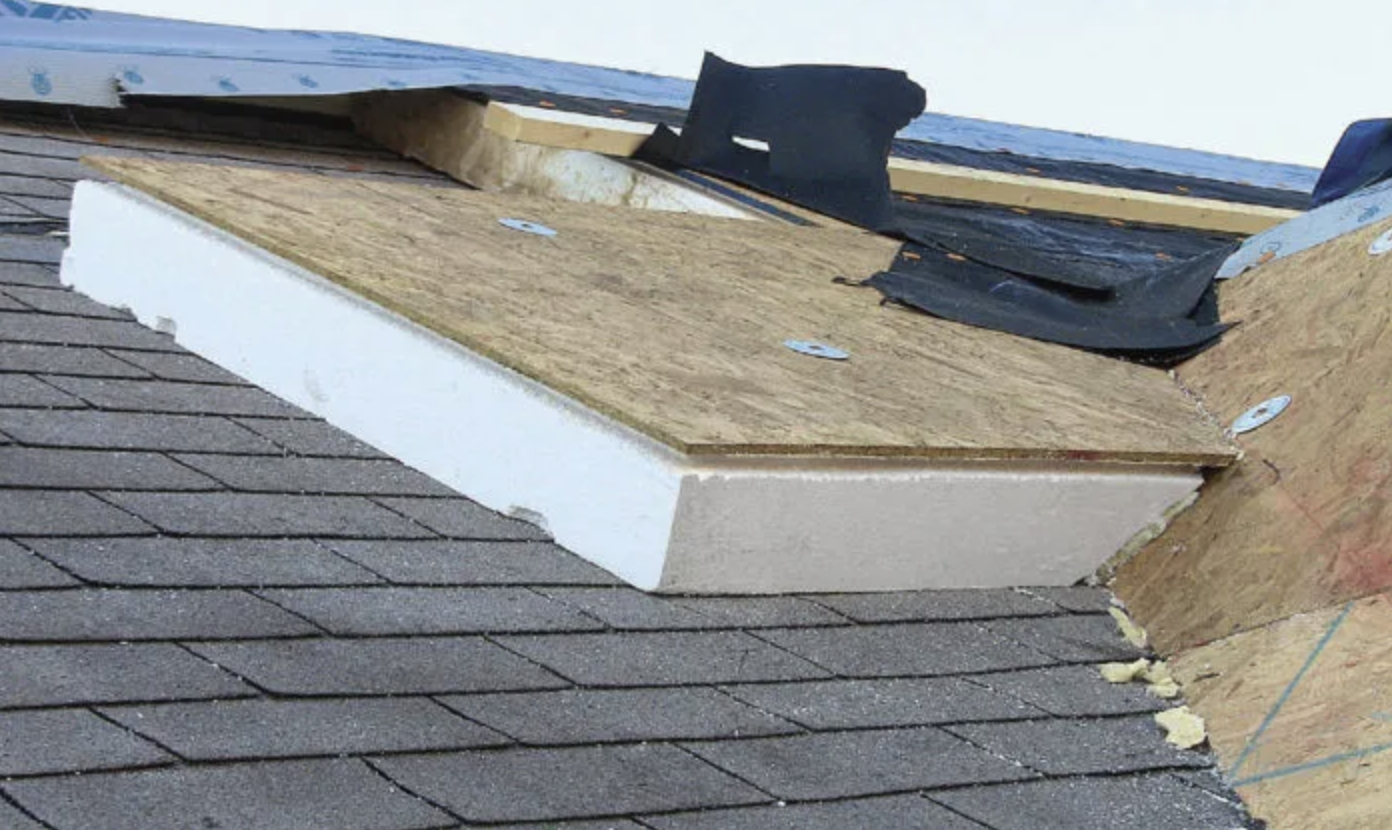
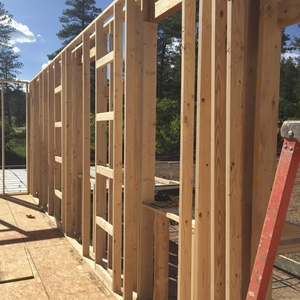
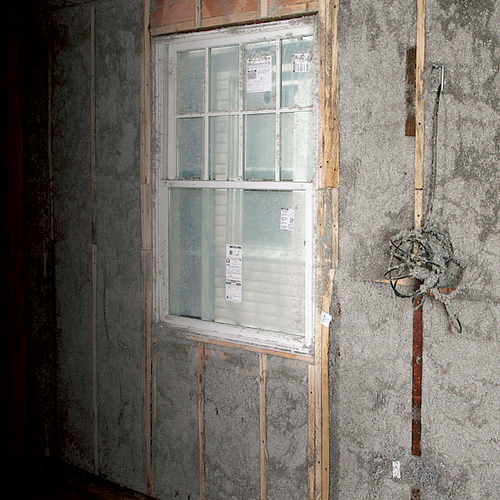






27 Comments
Note on electrical
As you are discussing existing walls it wouldn't hurt to note that knob and tube wiring SHOULD NOT be covered by insulation per NEC 394.12 (5). This means an electrical circuit upgrape prior to filling the walls.
Nothing magic about 3.5lbs density cellulose.
The settling of cellulose over time is a function of mechanical creepage induced by seasonal moisture loading & subsequent drying of the fiber. The climate, wall stackup, & drying-rates all play a factor. While 3.5lbs is "good enough" for most lower-48 applications it's not a magic number. In a good portion of the US 3.0lbs is also "good enough", and in milder drier climates 2.8lbs will do. In general the deeper the moisture cycling, the greater the creepage, and the denser the goods need to be.
With a rainscreened siding in a temperate not-too rainy climate it doesn't have to hit anywhere NEAR 3.5lbs density, but in very cold climates with unvented siding and an interior vapor retardency >0.5 perms even 3.5lbs pounds doesn't really cut it, but 4lbs might. It just depends.
See:
http://vbn.aau.dk/files/18887948/Verification_of_density_predicted_for_prevention_of_settling.pdf
Note: With more than 30 minutes of training and some self-cobbled dense-packing tubes it's entirely possible to hit north of 3lbs density with a single stage rental blower, but it's just plain slower going than with higher-power better controlled 2-stage units. The risk of a wall blowout in the hands of a less experienced practitioner is also lower with single stage blowers (but not exactly zero, if the wall is punky half-inch gypsum with rusting screws.) Anybody interested in DIY dense packing can web search to find the wealth of information on the subject published by a guy named Rick Karg / RJ Karg Associates. While there are no rocket scientists wasting their careers as dense packers, there are still lots of details to get right, but it's not particularly hard.
Response to Dana Dorsett
Dana,
Higher densities have at least two advantages over lower densities.
One of them you mentioned: higher density installations are less likely to settle.
The other you failed to mention: higher density installations have lower rates of air leakage than low-density installations.
Knob & tube (response to Nathan)
SFAIK there are still no documented cases where insulating over knob & tube wiring started a housefire, and that restriction in the code has been removed in some states.
The theory behind the restriction is that the local generated heating at less than air-tight k & t splices would light off insulation, and while that condition can be forced in a lab, that has not been the experience in the field.
Check your local codes, but in older house wiring degraded BX is a much bigger fire hazard (insulated or not) than knob & tube (insulated or not.)
Air tightness with density (response to Martin)
The air-retardency of even 2lbs 2-hole method cellulose is tighter than R13 fiberglass but not nearly as good as any level of densepack. At 2.8lbs cellulose has about half the air retardency of 3.5lb cellulose, but it's already an extremely good number. (Half of next-to-nuthin' is still next to nuthin'). At any dense packed density cellulose is measurably better than the 2-hole method approach, but even 2-hole method is tighter than the noo-skool fiberglass blowing wools at 1.0lbs density (which is one standard installation density rated in the manufacturer's literature), but not as tight as 1.8lbs+ fiberglass.
Above about 2.8lbs density the R-value of the cellulose starts to slowly fall, but it's still worth dense-packing to the level necessary to avoid longer term settling issues
See the curves for air-retardency of cellulose vs. density in the graphs in this bit o' marketing fluff for Spider:
http://www.specjm.com/files/pdf/Dense_Pack_JMSpider_vs_Cellulose.pdf
(There are other sources of the same info out there in greater detail if you like, but those curves summarize it about right.)
Injection foam note (for Erik North)
"...sometimes called tripolymer foam, injection foam is -- wait for it -- injected into the wall cavity, where it expands around wires and outlets."
Injection foams like TriPolymer (tm), or CoreFill 500, etc foams differ from polyurethane pours specifically because they DON'T really expand, but simply flow. They're only bubbling/expanding when it's in a highly liquid state, but the pressure is being supplied by the injection equipment, not the expanding blowing agent, and it's a fairly low pressure making blowout risk low.
But those foams also don't bond to the wood or flex nearly as well as expanding polyurethanes, contributing to the low quality air-tightness. Since is not under dynamic pressure after installation (the way dense pack is) and isn't strongly self-glued to the adjacent materials it doesn't flexing or stretch with the dimensional changes of wood with humidity & temperature the way polyurethane does it's prone to seam leakage a the mating surfaces.
Slow expanding polyurethane pours seal better, but they're expensive and are much more prone to blowout disasters (which is why some foam installers won't do them at any price.) To do a half-pound pour safely usually requires monitoring with infra-red imaging equipment and stopping when the initial pour fills too much, then topping off with a smaller shot after the initial pour has fully expanded, which can be time & labor intensive. Any gaps & void become permanent- there's no "do-over", since the stuff is effectively glued in place. Two pound pours are similar, but trickier to get right, and easier to blow out.
aau link
dana: the aau link is in danish, and my browser can not translate it. is there an english link? thanks, and thanks for all the details on this.
Doesn't everybody read skandahoovian? :-)
When I click on the link it comes up in English (if not a Yankee or Canuckistani dialect).
Maybe it's a web-browser issue truncating the URL.
"http://vbn.aau.dk/files/18887948/Verification_of_density_predicted_for_prevention_of_settling.pdf"
(copy and paste it without the quotes.)
Danish link
The Danish link doesn't work for me either.
Thank you Dana.
Fabulous
Thank you Dana.
Fabulous useful building information Dana.
"porous and potentially wet surfaces"
"... [foam] can be safely installed with brick and stucco facings"
Ok, now I worry about the dense-packed cellulose retrofit on my stucco house. Time to scrape it off the lot & rebuild? :(
2 questions
I have a few questions that someone might be able to help with.
1. What if there is existing insulation in the wall? That could be old fiberglass batt, or something like old newspaper. Let's assume it can't easily be removed. Then what?
2. Is anyone concerned about packing insulation into a wall cavity that has performed for years without an issue, even if it had no insulation? I am wondering about minor amounts of moisture but held longterm within the insulation up tight against the exterior wall sheathing. The wall I am thinking of would be a wood sided wall.
mixing materials
A previous owner of my house had loose fiberglass insulation blown in, but from what we've noticed, the installers missed some areas and the material has settled significantly. Is there any issue with having these cavities topped off with cellulose (forming a mixture of old fiberglass and new cellulose) or should we stick with fiberglass?
Blow In w/o Sheathing
Our 1910 Florida Craftsman was built without sheathing. Is blow-in an option? I've read many conflicting opinions about blow-in for old houses-- those against are concerned that the wall assembly allows more water penetration than a modern one and you're inviting mold. Thoughts? In the meantime I've been putting my attention towards air-sealing the interior as much as possible.
Knob -N- Tube
The Knob-n-Tube controversy needs to be resolved, if we limit our focus to a condition that has had no proven ill-effect , we are taking away a large sector of homes that need our help with energy efficient processes. The older homes are the worst offenders and are the" Energy Thieves". I 'm not saying that you don't have the systems checked out for safety, that's a no brainer. but to say across the board that all knob and tube wiring in all homes have to be replaced is....obtuse and wrong. all of these so called " Energy Gurus'"spout off this type of advice as if it were Gospel. they need some real world experience(Field) to go along with all of the certifications and letters after their names. I am not trying to be insensitive to others opinions but these kind of comments confuse and in some instances will scare people from making a good decision to Insulate and conserve energy .Lastly, Good and responsible Insulaters will check.
injection foam
Back in the 80's I was working for a dry-waller who made a killing ripping out old injection foam - urea formaldehyde, wasn't it.? Who knows that the tripolymer foam isn't the'be-all-end-all' that is going to give us the same sort of problems...
Removing Air Leakage from the Equation
Assuming air leakage is not an issue (tight house, ZIP system sheathing done properly, vented roof), which gives the best insulation? Please ignore Dew Points, moisture movement et. al. as they are all taken care of. Climate zone 6.
Response to Michael Sheppard
Michael,
Whole-house thinking makes it difficult to propose an insulation while ignoring most of the relevant issues (air leakage, dew points, and moisture). The issues you tell us to ignore are all important ones.
If you want to know more about the range of insulation choices available, as well as the relevant R-values per inch of all common insulation materials, I suggest that you read this article: Buyer's Guide to Insulation.
Response to Eric Sandeen
Eric,
You wrote, "Now I worry about the dense-packed cellulose retrofit on my stucco house. Time to scrape it off the lot & rebuild?"
It's true that stucco houses have been associated with a disproportionate number of building failures. However, most stucco houses don't have rotting walls, and the decision to insulate your stud bays with cellulose wasn't necessarily unwise.
We'd need to know a lot more about your wall construction details, your flashing details, and your roof overhangs before we could conclude that there is any reason to worry.
Response to Nathan Kipnis
Nathan,
Q. "What if there is existing insulation in the wall? That could be old fiberglass batt, or something like old newspaper. Let's assume it can't easily be removed. Then what?"
A. In most cases, if your wall is already insulated, it doesn't make any sense to try to blow in more insulation around the old insulation. If you feel that the R-value of your wall assembly is too low, the best way to improve your wall performance is to add a layer of rigid foam on the exterior side of your wall sheathing (when it's time for new siding).
Q. "Is anyone concerned about packing insulation into a wall cavity that has performed for years without an issue, even if it had no insulation? I am wondering about minor amounts of moisture but held longterm within the insulation up tight against the exterior wall sheathing. The wall I am thinking of would be a wood-sided wall."
A. Yes, many people worry about that issue. It's hard to generalize, but it's safe to say that wall sheathing stays dryer when the stud bays are uninsulated. One the stud bays are insulated, sheathing gets a little more damp during the winter, and paint won't last as long.
In most cases, these facts don't lead to major problems. The damp sheathing dries every spring, and the homeowner either gets used to painting more frequently, or throws in the towel and gets vinyl siding. Most homeowners feel that the benefit of lower energy bills outweighs the disadvantages associated with insulation.
Response to Mark Fredericks
Mark,
Q. "A previous owner of my house had loose fiberglass insulation blown in, but from what we've noticed, the installers missed some areas and the material has settled significantly. Is there any issue with having these cavities topped off with cellulose (forming a mixture of old fiberglass and new cellulose) or should we stick with fiberglass?"
A. Feel free to blow in either product at the top of your stud bays. There is no reason to worry if you choose to add cellulose on top of the fiberglass.
Response to Matt Goff
Matt,
Q. "Our 1910 Florida Craftsman was built without sheathing. Is blow-in an option? I've read many conflicting opinions about blow-in for old houses-- those against are concerned that the wall assembly allows more water penetration than a modern one and you're inviting mold. Thoughts?"
A. I don't think it's a good idea to blow insulation in your stud bays if your walls lack sheathing. Fixing this type of wall is expensive -- no doubt about it. You have two choices: work from the exterior, or work from the interior.
If you work from the exterior, you'll have to remove the siding (carefully, if possible, so that it can be re-used, or recklessly if you intend to dispose of it), and then install insulation, sheathing, and siding (with or without a ventilated rainscreen gap between the siding and the sheathing).
If you work from the interior, you'll have to remove the existing plaster & lath or drywall, and then install some type of panel between each pair of studs, followed by insulation and new drywall.
Slow rise Polyurethane
I used slow rise polyurethane injected into the walls from the inside in my 100 year old house. A few things I learned along the way:
It is messy but not too difficult. I had a couple of college students helping. The biggest mess is from drilling the holes due to the dust. We used temporary plastic sheets as walls to contain the dust with some success. The foam can also flow out onto the floor if you overfill and do not plug the hole.
One thing I discovered after we did it is that we did not get full coverage. The wall cavities were visible from the attic and the foam sometimes left gaping holes unfilled at the top of the wall. Luckily I was able to fill them from the attic, but it would have been easier if we had checked more thoroughly as we went. There may be other gaps in coverage not visible from the attic.
If I were doing it over, I would drill some exploratory holes to check coverage either randomly or in suspected voids to ensure proper filling technique. When you are patching dozens or hundreds of plaster holes anyway, what's a few more. I also would have explored the option of filling from outside which might have been less time consuming to patch.
My walls are plaster over rocklath and we could sometimes hear some popping, cracking, and expansion sounds as we sprayed the foam into the wall. If you look closely, there is a waviness to the walls that I don't think was there before. Nothing that is a problem for me because it is not noticeable to any casual observer.
I would definitely consider doing it again, but I would also explore more thoroughly the option of dense pack cellulose, either DIY as Dana suggests above, or hiring a contractor.
Rockwool?
As a kid, rockwool was the go-to blown-in insulation, and I have been reading about using rock wool batts.
Is rock wool a reasonable replacement for fiberglass or cellulose in 'higher density blown in' applications?
Response to Jack Coats
Jack,
Very few U.S. insulation contractors serving the residential market offer blown-in rock wool. However, if you can find a contractor offering blown-in rock wool, it's an excellent choice.
older house with wood walls
response to Nathan Kipnis
Exactly my problem. I bought a 1,000 sq ft 65 year old ranch sight unseen. It had been updated from alum siding to vinyl with an insulation board up against what I believe is plank boards over the studs.
As I have discovered, no contractor, builder, elec, hvac or plumber will come near it.
As it was listed for its assessed value, and I had it inspected per Rural Development, I expected low utilities, good insulative quality; what I needed as an older woman on fixed income.
First, the updates left out a few necessary items. The basements windows are single pane metal framed, which probably are the type with metal flanges buried in the concrete basement wall. There is a wood entry door one one of the entrances without any storm, etc. All windows are thermopane in good condition except one that abuts the enclosed porch that did not receive alum siding striping and vinyl replacement so it is without insulation in the wall and also under the floor as the porch is over the basement. My son was able to assist me in a simple changing of the kitchen screen door to a storm inset. As in all undone jobs here the simple was not. The door had a hydraulic closer that had counter sunk nuts on the flat head screws behind the barrel of the closer. They had to be hacksawed off. It took 2 people to do this. That means probably the inset was never installed and the screen was in year round use. You can now see why I am viewing all future repairs with a jaundiced eye.
Back to the walls. There is an insulative board behind the vinyl. Exactly what your advice is to the above poster. As I am now closing on my first winter here after discovering a large air gap under the wood door, basement access door, adding bubble wrap glazing to the basement windows and the single pane upstairs, hoping that my previous month where I had the thermostat set at 62 day 58 nite, ceramic heater in continuously occupied small den, would reflect a savings when I turned the thermo up to 66 day 55 nite, cut off one of two ceramic heaters, and had performed the bubble wrap insulation and leap stops.
Well No.
I just got my bill from the middle of last month when I instituted these conservation measures and it is almost 3x higher than the previous month. That suggests to me that the insulation applied to the wood walls of the house in redoing the alum to vinyl is insufficient. My best guess is that any setting over 62 just ices the eaves.
There is no mention of a rain gap coverage in my inspectors report. In the attic is a loose layer blackened by sulfur oxidizing bacteria (in my city water) as they previous owners vented the bath into the attic. They then added batts directly over this. I can see no vapor barrier. The inspectors report leaves me clueless as to whether there are rafter ducts. I was offered no infra red scan to confirm the quality of the insulation redo. Even the years utility bills were denied me. The claim that the owner lived here one winter before going to FL is a stupendous exaggeration as a small rain cap over the concrete porch steps has a crack that leaks water that ices the entire step and would therefore be a danger every single day of the winter. This would have been replaced if the elderly woman owner had indeed been here in winter residence. I used a metal pipe to create a dent upward so the snow/water sluices off sideways.
Since I paid the assessed value, and my ss income would preclude any extravagant alterations, I am wondering how I can accomodate my income to the nearly equal demands of living here.
Response to Kathleen Sisco
Kathleen,
You should contact the agency nearest your home that implements the federal Weatherization Assistance Program. (You can find information with a Google search; include the name of your state.)
For low-income homeowners who qualify for the program, weatherization assistance is free. This work usually involves air-sealing work and insulation improvements.
If your income exceeds the income limits, your local weatherization assistance office may be able to recommend a local home performance contractor who can make improvements to your home.
Log in or create an account to post a comment.
Sign up Log in